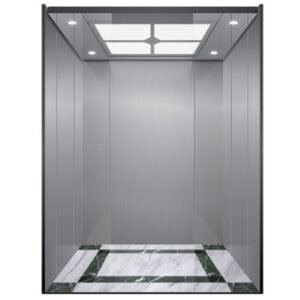Enhancing Passenger Safety and Comfort: A Guide to Updating a Passenger Elevator Control System
Table of Contents
ToggleIntroduction:
Updating the control system of a passenger elevator is crucial for enhancing safety, optimizing performance, and ensuring a comfortable ride for users. This article explores the key aspects involved in updating a passenger elevator control system and highlights the advantages and application fields that customers should consider when undertaking such updates.
1. Understanding the Need for Update:
A passenger elevator control system update is necessary to improve the overall functionality and reliability of the elevator. This includes enhancing safety features, optimizing energy efficiency, and implementing advanced technologies. For instance, by integrating modern control algorithms, the elevator can ensure smoother and more precise floor leveling, minimizing the gap between the elevator and the floor.
2. Advantages of Updating:
Updating the passenger elevator control system brings numerous benefits. Firstly, it significantly enhances passenger safety. State-of-the-art control systems are equipped with advanced safety features such as emergency stop buttons, fire control integration, and real-time monitoring capabilities. These upgrades can minimize the risk of accidents and ensure prompt response to emergencies.
Secondly, updating the control system improves energy efficiency. Efficient control algorithms, regenerative drives, and intelligent standby features help reduce unnecessary energy consumption. By updating the control system, elevators can contribute to environmental sustainability and generate long-term cost savings for building owners.
Furthermore, the updated control system can optimize the elevator’s performance. With features such as predictive maintenance, intelligent traffic management, and personalized settings, passengers experience faster travel times, reduced wait times, and improved overall riding experience.
3. Application Fields:
The application fields of updated passenger elevator control systems are diverse. For example, in high-rise buildings, where heavy traffic is common, it is essential to have efficient control systems that prioritize elevator dispatching based on demand. By updating the control system, building owners can ensure smoother traffic flow, reduce congestion, and enhance user satisfaction.
In commercial facilities such as shopping malls and airports, an updated control system can improve accessibility and convenience. Features like destination control, touchless operation, and smartphone integration offer passengers a seamless and user-friendly experience.
Moreover, in residential complexes, where elevators are used by individuals of various ages and abilities, updating the control system allows for customization and adaptability. Intuitive user interfaces, voice recognition, and adjustable speed settings cater to the specific needs of different users, ensuring a safe and comfortable ride for everyone.
4. Encouraging Thought:
The evolution of passenger elevator control systems is an example of how technology continuously improves our daily lives. Alongside the physical construction of elevators, control systems play a critical role in ensuring seamless and safe vertical transportation. It is fascinating to consider the future possibilities in this field, such as the integration of artificial intelligence and smart building systems into elevator control, making our journeys even more secure, efficient, and enjoyable.
Conclusion:
Updating a passenger elevator control system is a vital investment that enhances safety, optimizes performance, and improves passenger experience. The advantages of updating, including enhanced safety features, improved energy efficiency, and optimized performance, are essential considerations for customers seeking elevator control system upgrades. By keeping pace with technological advancements, elevators can adapt to the evolving needs of modern buildings and provide passengers with an exceptional and worry-free journey.


